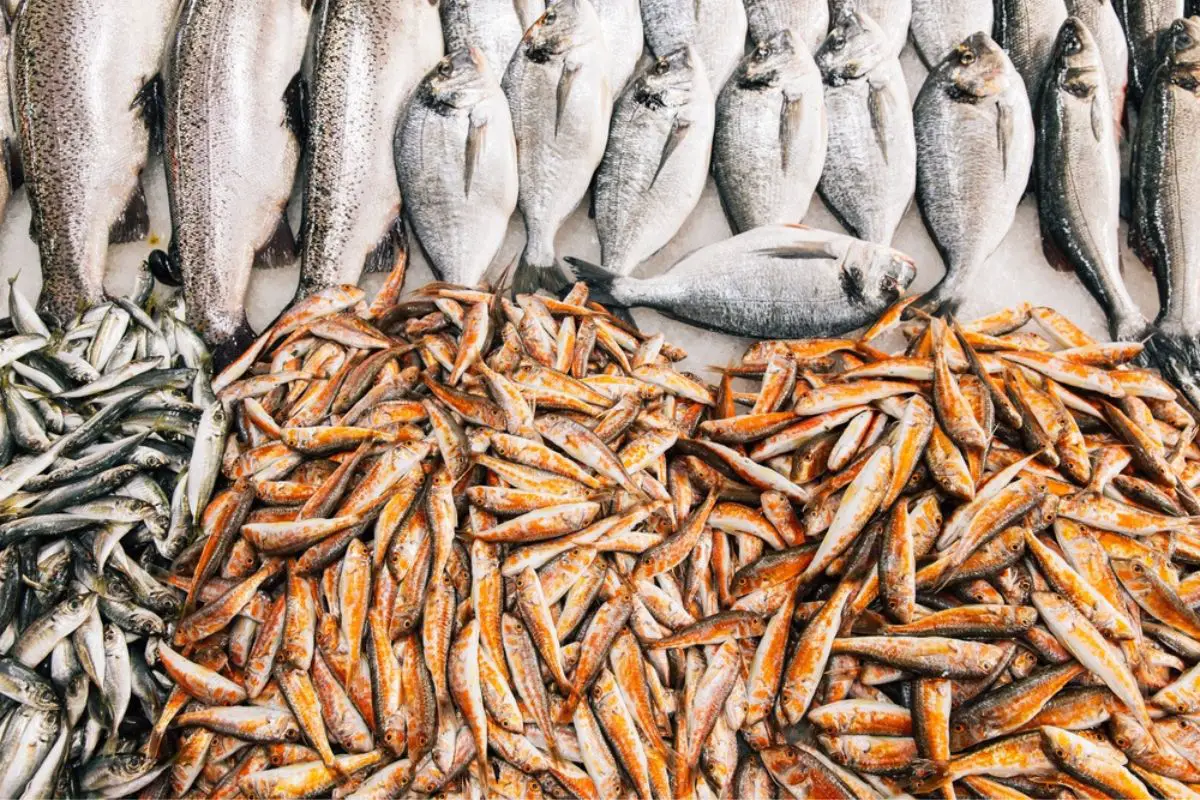
Anchovy is an oily and bony fish and other similar fish will include: other small fish (or forage fish) like herring and sardines, plus bigger fish like mackerel, swordfish, tuna, trout, and salmon. Some species of fish, known as “oily fish,” store oil (fats) in their coelomic cavity (an area of the digestive tract) and their soft tissues.
The percentage of oil in their fillets ranges from about 10% to 30%, depending on the species. Let’s take a deeper look at fish similar to anchovies and see what are the best alternatives for us.
Fish Similar to Anchovies
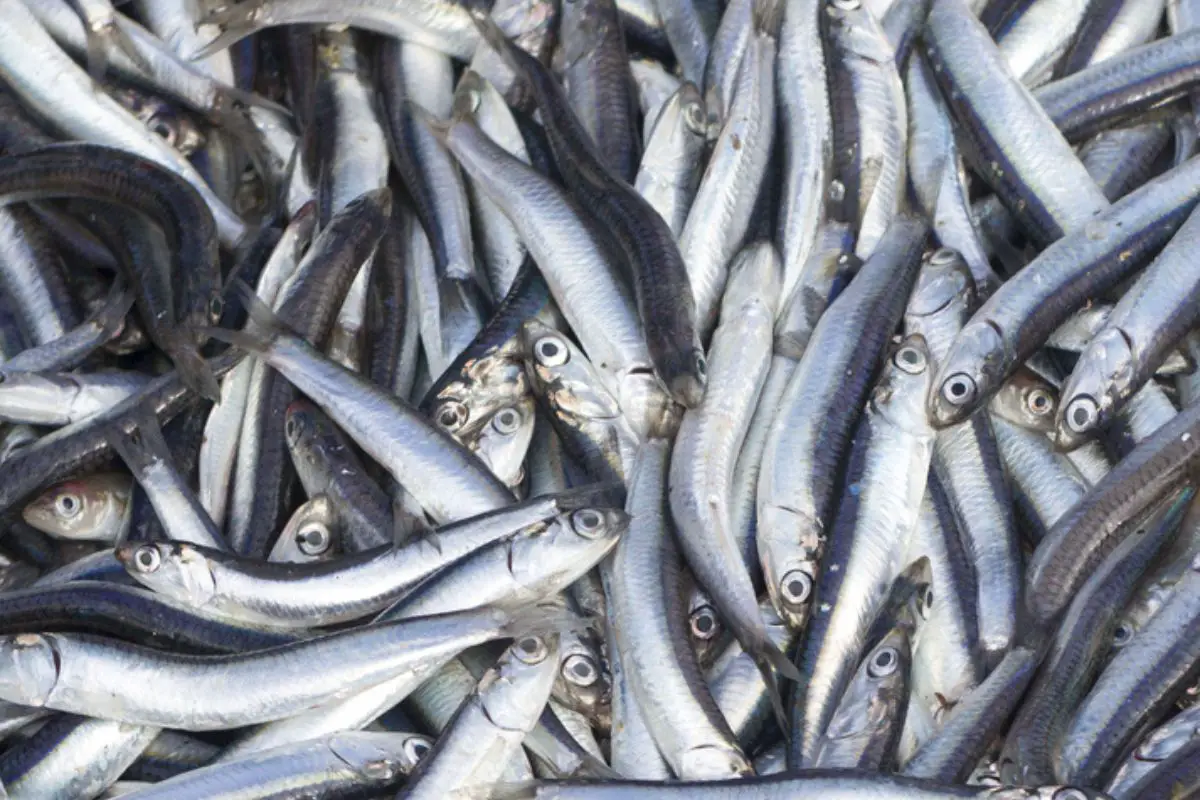
As established earlier, anchovies are oily fish and also forage fish. Small deep-sea fish used as food by bigger predators are known as forage fish, prey fish, or bait fish. Marine mammals, birds, and larger fish are all potential predators.
In the water, forage fish often filter feed on plankton, which is near the food chain bottom. Small fish like silversides, halfbeaks, and smelts like gold and fusiliers and capelin are also included, although members of the group from sardines and herrings to sprats are the most common. Because of their modest size, forage fish band together to form schools.
To more effectively filter plankton, others swim in coordinated grids with open mouths. These schools can swell into massive shoals that travel along shorelines and out to sea. Large marine predators rely on the shoals as a source of concentrated energy.
Predators keep a close eye on shoals, are aware of how many of them there are and where they go, and travel long distances to join or remain with them. Primary producers in the water, found primarily in plankton, convert solar energy into food to power marine food webs. Ingestion of plankton by forage fish provides this energy transfer, with the forage fish ultimately becoming prey for higher-level predators.
This means that foraging fish are the most important species in marine and freshwater food webs. Forage fish are caught by the fishing industry for commercial purposes on occasion, but more often than not, they are used as feeder fish in piscivorous animal farms. Some marine biologists are worried about how this would harm predator fish populations.
What are Oily Fish?
Whitefish, as opposed to oily fish, only have oil in their liver and have far less of it generally. Flatfish, haddock, and cod are all types of whitefish. Oily fish are deep-water and reside higher up in the water system, while whitefish are demersal and dwell on or around the seafloor.
What are the Benefits of Oily Fish Like Anchovies?
The fat-soluble vitamins A and D, as well as the omega-3 fatty acids found in oily fish meat, are both excellent sources of nutrition (white fish include those nutrients too but in a lesser portion). This is why oily fish, as opposed to white fish, may be preferable for human consumption, especially in terms of preventing cardiovascular disorders like ischemic heart disease and stroke. When compared to whitefish, oily fish are identified as having greater amounts of toxins like mercury, dioxin, and persistent organic pollutants (POPs).
The omega-3 fatty acids found in oily fish have been linked to a decrease in inflammation, which could be beneficial for those with rheumatic diseases like arthritis.
What Forage Fish is Found in the Ocean?
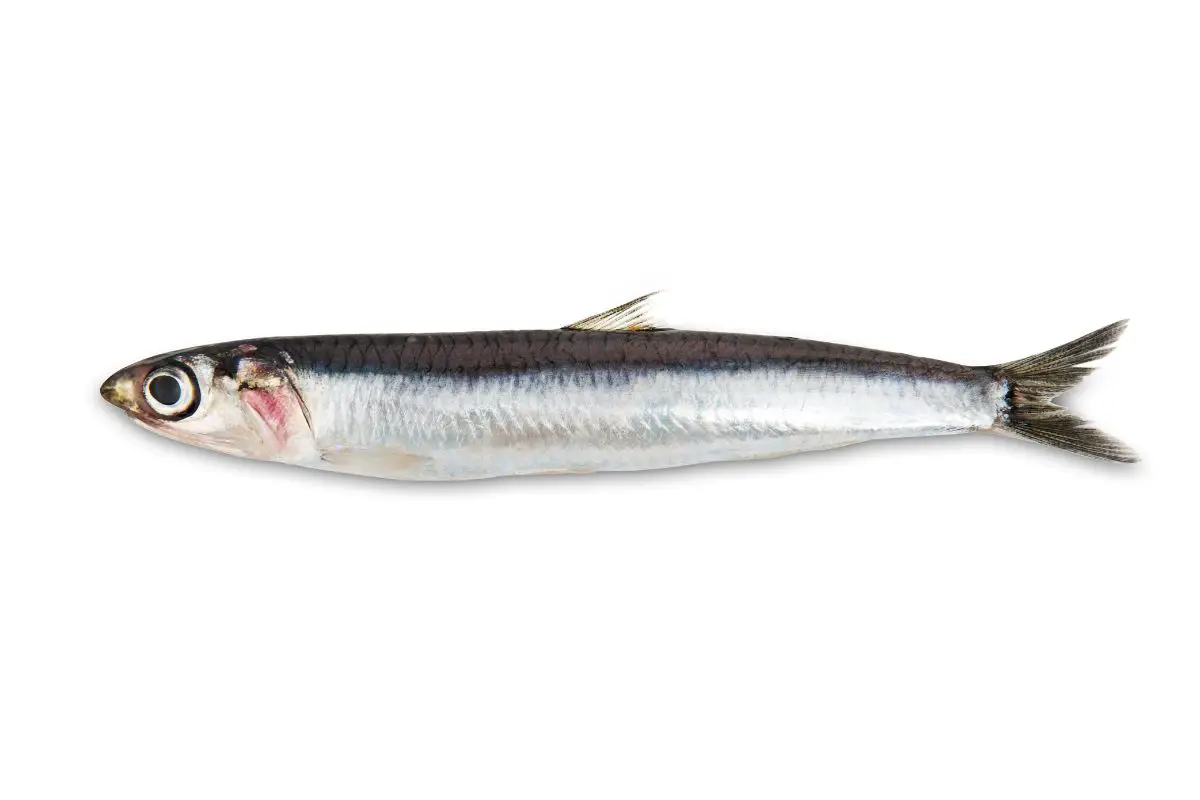
Tiny, shimmering, schooling slippery fish including menhaden, anchovies, and herring are typical ocean forage fish. Other small schooling baitfish include juvenile rockfish, butterfish, pollock, halfbeaks, sand lance, smelts, and capelin. Popularly known as Richards or sardines, herrings are a vital food source.
Forage fish is a word used throughout fisheries, and it is also applied to forage species that aren’t genuine fish but serve a big role as food for predators. For this reason, the term “forage fish” can also refer to invertebrates like squid and shrimp. Even the shrimp-like animals known as krill are sometimes referred to as “forage fish,” as they are both small enough to be consumed by predators and big enough to feed on similar zooplankton predators.
Which Forage Fish Come From Rivers and Lakes?
Freshwater ecosystems like lakes and rivers are home to foraging fish, which are eaten by larger freshwater predators. Most of the fish in lakes and rivers are little bait fish, often measuring less than 15 cm (6 in) in length. Bony fish, shad, killifish, suckers, and members of the sunfish family (apart from crappie and black bass) are also important food sources in freshwater ecosystems.
Forage fish that migrate long distances include species like the eulachon. In the situation of human operations, there will constantly be both useful and unwanted fishes within any freshwater or saltwater habitat, and these characteristics will vary from nation to nation and, sometimes, from area to area within a single country. Diverse freshwater predators of forage fish are categorized by sport fishermen as either:
- sport (or game) fish, which are prized for their fighting prowess and tasty flesh
- The other, less attractive species, in North America, are known as rough fish but are also called coarse fish in Britain.
Are all Fish Similar to Anchovies Edible?
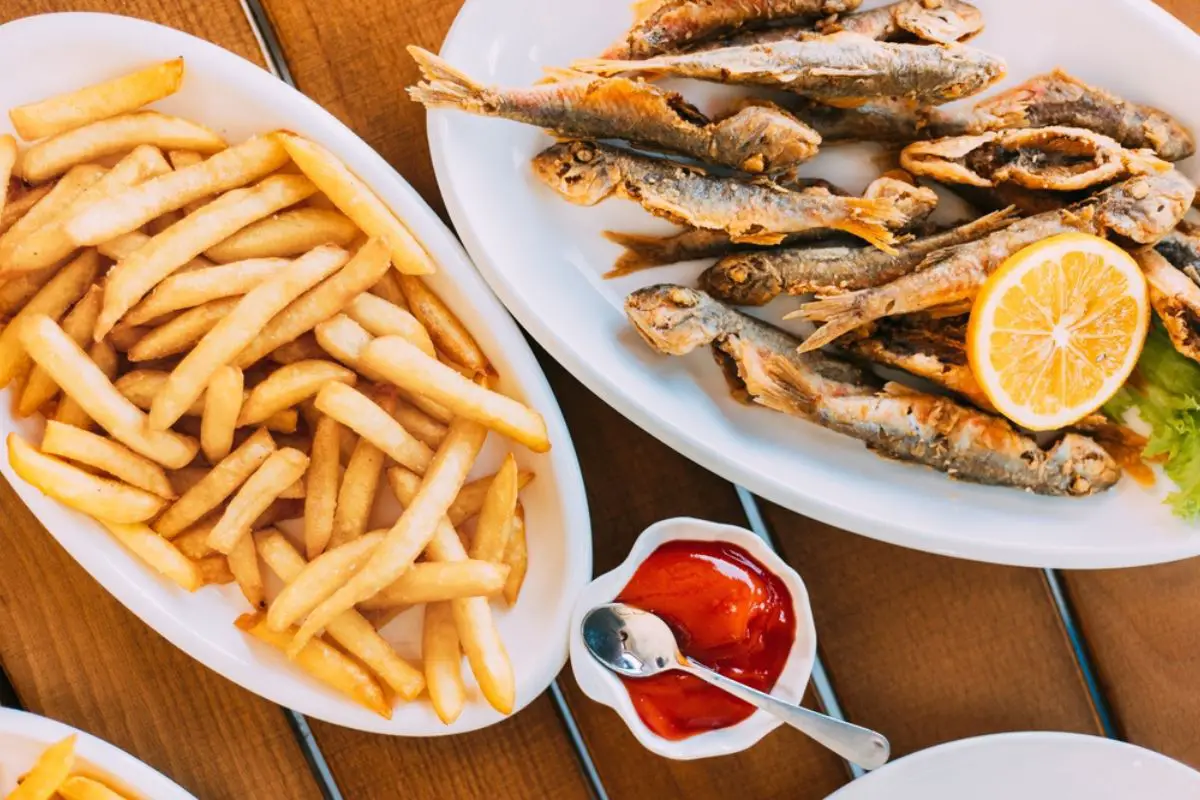
Typically, when people talk about “rough” or “coarse” fish, they’re referring to species that aren’t popular for consumption, aren’t searched out for sporting purposes, or become invasive, depleting populations. They face off against more fashionable sports fish to feed fish. They are typically not preserved by game laws because of their negative connotations.
Fish used as bait are not typically categorized as rough or coarse species, and this holds for forage fish as well. U.S. state officials as well as anglers both use the phrase “rough fish” to refer to unwelcome predator species. In North America, anglers target several species, including muskellunge, walleye, catfish, pike, bass, trout, and salmon.
Panfish are the smallest fish species and get their name from the fact that they may all be cooked in a single pan. Sunfish, bluegill, perch, rock bass, and crappies are all examples of this family of fish.
Where Did the Term Coarse Fish Come From?
Coarse fish is a word that was first used in the early 1800s in the United Kingdom. Previously, “game fish” like trout and salmon were targeted by the affluent as part of a leisure fishing activity. Coarse fish was a derogatory term for any fish that wasn’t considered a game fish.
These days, char, trout, and salmon are all included in the category of “game fish,” along with other Salmonids (apart from grayling). Larger Cyprinids (bream, roach, and carp) as well as lamprey, gar, catfish, and pike are the main components of coarse fish. Now that coarse fish aren’t looked down upon, fishing for them has increased in popularity.
What Forage Fish is the Most Eaten?
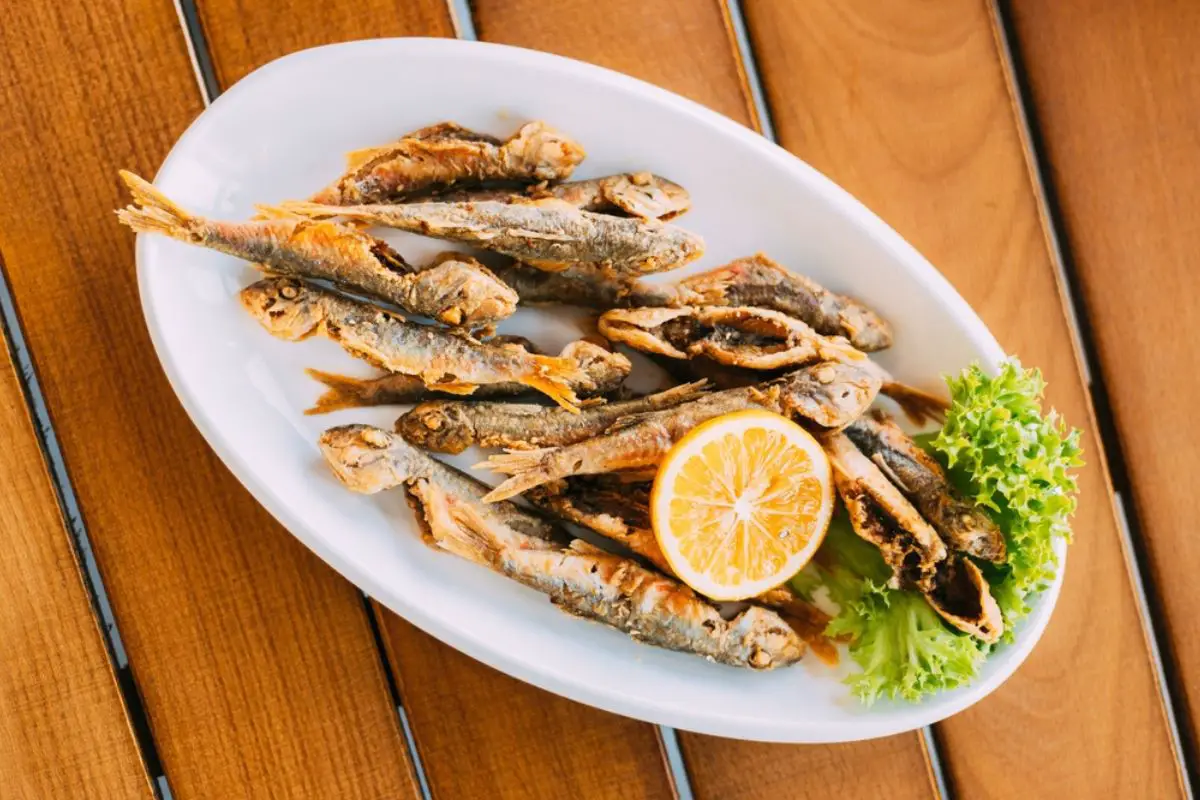
An astounding one-third of all seafood harvested in the world is forage fish. These microscopic marvels provide a protein source for the huge marine food chain by feasting on plankton, the source of omega-3 fatty acids. At present, we only use about five percent of all the forage fish we harvest for human consumption, mostly in the form of canned sardines, anchovies, and fish oil supplements.
This is a decrease from the 15% of fish consumed worldwide in the year 2000 and can be attributed in part to the increasing popularity of aquaculture, which has lowered the price of previously luxury fish and seafood like salmon and shrimp.
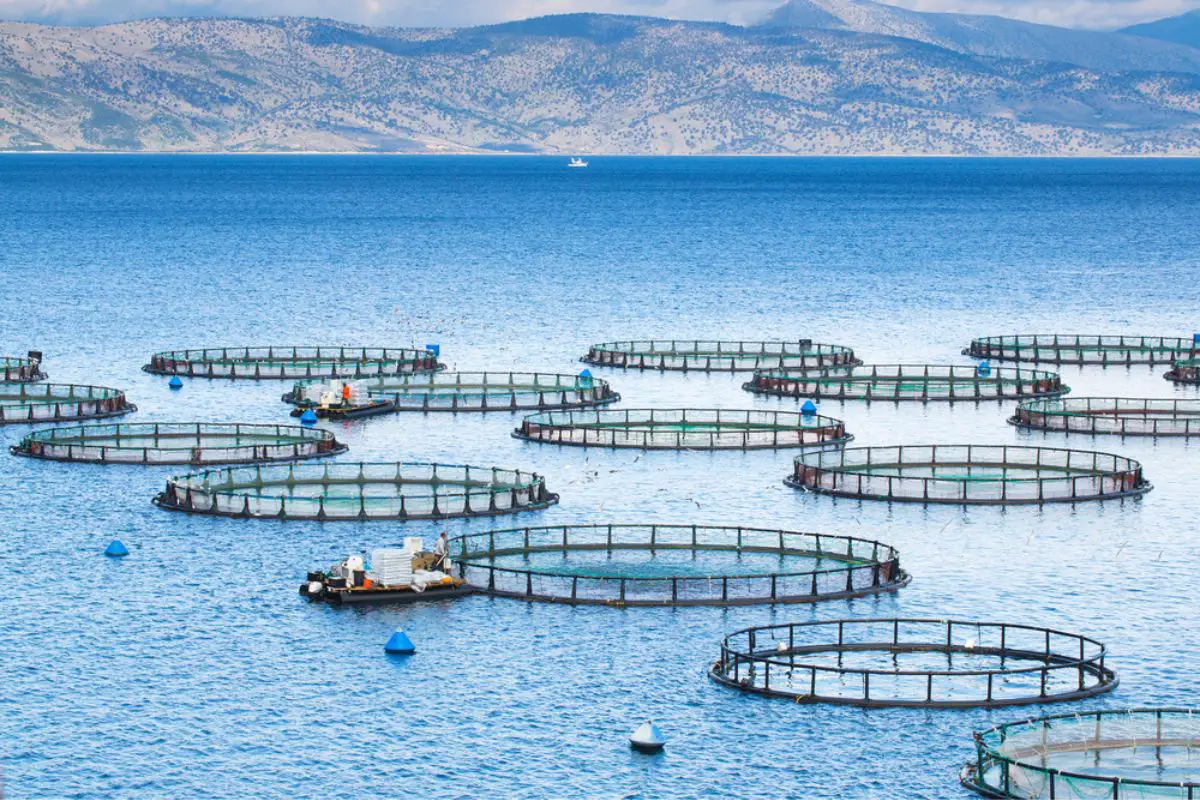
Most forage fish are processed into fishmeal plus oil for use in aquaculture and the feeding of terrestrial animals. About 70% of the world’s fish meal output is now being used in aquaculture. The major consumers of fish meals were the poultry as well as hog markets until the turn of the century.
Fish meal has become more expensive as aquaculture has expanded rapidly, from about 15 million tons created in 1990 to 80 million in 2016. As a result, producers of poultry and hogs have begun using alternative, less expensive protein sources, such as soy. However, 25% of fish meal is still consumed worldwide.
The hunt for cheaper alternative feeds is also being driven by the economic needs of the aquaculture sector. Fish dinner was a staple 10 years ago because of how cheap it was. In terms of nutrition, it met the needs of the fish perfectly.
Michael Rust, a research advisor to NOAA’s Aquaculture Program who was not involved in the study, notes that diets are increasingly being blended from plant-based protein sources such as pea proteins, canola, corn, and soy and that the quantity of fish meal is decreasing. According to Froehlich, soy and wheat are the two most common components in the modern fish diet. There are also other changes taking place.
Rust, who is optimistic that the market may help develop innovative ways to keep aquaculture growing, notes that the scraps, (e.g., guts, tails, and heads), from fish, caught for human food, have become an exponentially bigger share of the fish meal given to cultured fish. Conclusion: “There are answers,” he says. According to Rust, who quotes the Norwegian salmon sector, almost two-thirds of the fish products today consist of trimmings.
He explains that fish may produce all the fishmeal they need for the next generation simply by trimming if their diet consists of only between five and ten percent fish meal. University of California Postdoctoral researcher Halley Froehlich has found evidence that fish byproducts are being used in fishmeal less and less frequently around the world. She believes, “China is a big question mark” because no information is given about the country’s byproducts in fish meals.
Froehlich believes that economics is reducing the usage of forage fish as aquaculture meal, but her model predicts that the ecological limits of these little silvery fish might be exceeded in under 20 years if a swift transition is not made to more sustainable feed alternatives. Moreover, the dynamics of wild-caught fish populations may be affected in ways that are difficult to forecast due to variables like climate change. More food for predatory species would be left in the water if conservation-based restrictions on catches for forage fish were reduced, with the result that fewer fish would be used in aquaculture.
Plus, there will be 2 billion additional people on Earth by mid-century, and the current trend toward eating more fish-based diets and supplements containing omega-3 fatty acids only adds to the pressure. Future events are clouded by doubt, adds Froehlich. The goal of our approach is to “capture that uncertainty” so that “better, conscious, adaptive judgments can be made across diverse sectors.”
Froehlich says her studies modeling numerous situations indicate that forage fish habitats may survive longer if we stopped giving them to “the things that don’t require them, like carp.”
Do Fish Like Anchovy Help Support Aquaculture?

The industry of aquaculture is thriving. Fish farming has increased to the point where farmed fish is consumed more frequently than wild-caught fish around the world. Consider: how frequently do consumers have the option of purchasing the more pricey wild-caught salmon as opposed to the cheaper farm-raised variety?
This worldwide pattern is devastating to populations of wild fish used as food for aquaculture operations. There may not be enough “forage fish,” which include anchovies and menhaden but are usually considered too small to consume by humans, to meet aquaculture demands by 2037, according to a recent study published in Nature Sustainability. Fish humans eat (as well as livestock; pigs & poultry are big eaters of fish-based feeds) are fed by these species, making them an important part of the marine food web that most people don’t give much thought to.
Despite the study’s bleak findings, the authors maintain optimism. With the right changes to the feed, aquaculture may continue to expand, providing much-needed protein to a starving world without threatening the survival of the forage species. Aquaculture, according to lead author and UC Santa Barbara postdoc Halley Froehlich, is currently the dominant user of forage fish.
To better understand how certain fish are now utilized and what concrete mitigation measures could prevent demand from outstripping supply, they decided to take a step back and examine other areas of the food business, such as pigs and poultry. According to Froehlich, the negative reputation aquaculture has in marine conservation due to its consumption of forage fish inspired her study. Froehlich stated that she hoped to spark dialogues about initiatives that could be taken to, at the very least, enhance the sustainability of aquafeeds, even though the fishing industry faces special problems in functioning in a long-term responsible way, such as worries about antibiotic usage and pollution.
Think of it as “hope for the best in the sea.” Looking for a Hook in the Water. According to Froelich’s study, reducing the amount of fishmeal fed to noncarnivorous fish species like carp is the best strategy to ensure the long-term viability of forage fish.
The majority of the world’s farmed carp comes from farms in Southeast Asia. Even though fishmeal only makes up a small percentage of carp feed, this species is the top consumer of forage fish worldwide. The Future of Fish Feed (F3) is an international consortium of non-governmental organizations (NGOs), academic institutions (universities and colleges), and private sector businesses that sponsor international competitions to develop fish feed alternatives.
Last year, Guangdong Evergreen Feed Industry Co. a Chinese company, clinched the inaugural challenge and received $200,000 for being the first to manufacture and sell 100,000 metric tons of seafood-free feeds. Ingredients including fly larvae, algae, bacteria, and yeasts are common in these kinds of meals.
One of the challenge’s judges is the University of Massachusett’s Michael Tlusty, who is a Sustainability and Food Solutions associate professor. He claims that single-celled bacteria and yeasts could be simpler for fish to absorb than soy-based feeds. F3 is currently engaged in a new challenge designed to encourage the development of an oil that does not come from fish but is nonetheless high in omega-3 fatty acids.
Tlusty predicts that the availability of oil will be the primary barrier to advancing the creation of alternate feeds on a global scale. Several activists as well as individuals who would like to forgo GMO products as well as byproducts are concerned that some of these options may include genetic alteration of yeasts or bacteria.
Anchovies FAQs
Can We Use Capers in Place Of The Anchovies?
If you don’t have any anchovies on hand, you can use one or two tsp of Worcestershire sauce to achieve the same subtle fishiness.
What Can I Use Instead of Anchovies if I Don’t Eat Them?
The southern Mediterranean is the natural habitat of sardines. They belong to the same species as herrings but are way bigger than anchovies. As tiny and greasy as sardines are, anchovies are even more so.
Is Worcestershire Sauce Fishy Because of the Anchovies in it?
Worcestershire sauce gets its signature umami flavor primarily from anchovies, one of its key ingredients. Anchovy ferments. Worcestershire’s bold flavor comes from the anchovies that are fermenting in vinegar for a year and a half.
These components, however, remain unverified.
